Qi Zheng
GRACE: Designing Generative Face Video Codec via Agile Hardware-Centric Workflow
Nov 12, 2025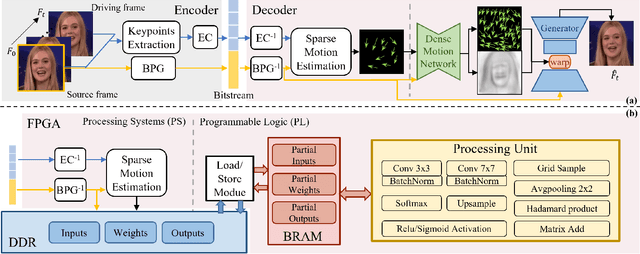
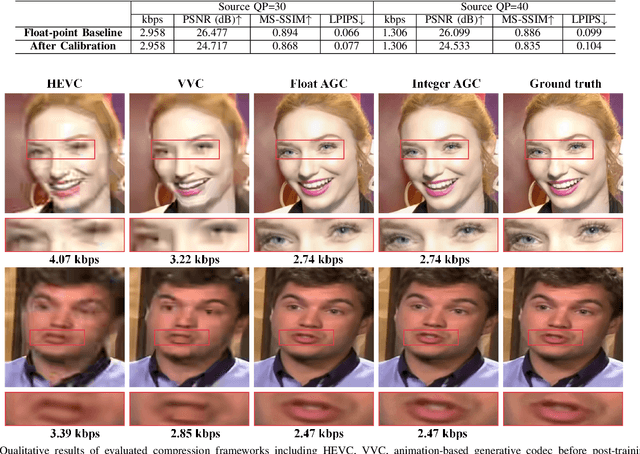
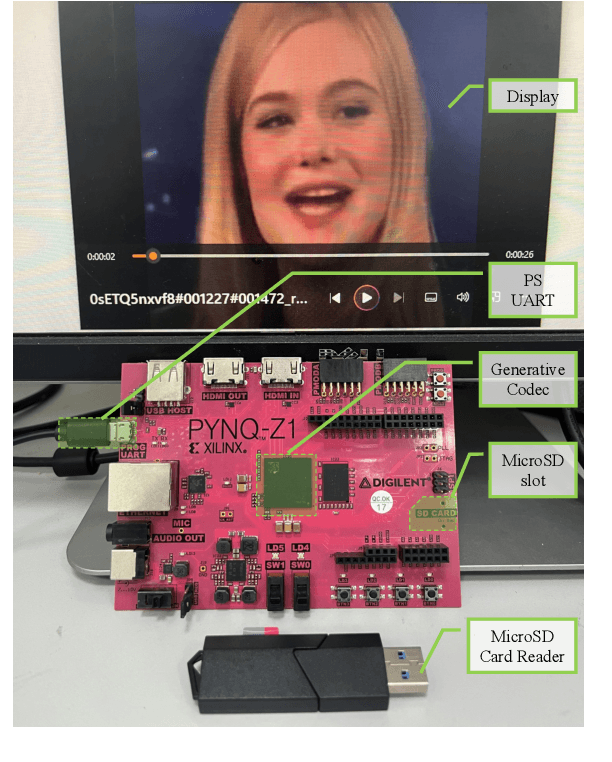
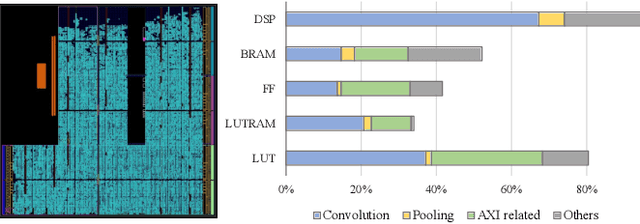
Abstract:The Animation-based Generative Codec (AGC) is an emerging paradigm for talking-face video compression. However, deploying its intricate decoder on resource and power-constrained edge devices presents challenges due to numerous parameters, the inflexibility to adapt to dynamically evolving algorithms, and the high power consumption induced by extensive computations and data transmission. This paper for the first time proposes a novel field programmable gate arrays (FPGAs)-oriented AGC deployment scheme for edge-computing video services. Initially, we analyze the AGC algorithm and employ network compression methods including post-training static quantization and layer fusion techniques. Subsequently, we design an overlapped accelerator utilizing the co-processor paradigm to perform computations through software-hardware co-design. The hardware processing unit comprises engines such as convolution, grid sampling, upsample, etc. Parallelization optimization strategies like double-buffered pipelines and loop unrolling are employed to fully exploit the resources of FPGA. Ultimately, we establish an AGC FPGA prototype on the PYNQ-Z1 platform using the proposed scheme, achieving \textbf{24.9$\times$} and \textbf{4.1$\times$} higher energy efficiency against commercial Central Processing Unit (CPU) and Graphic Processing Unit (GPU), respectively. Specifically, only \textbf{11.7} microjoules ($\upmu$J) are required for one pixel reconstructed by this FPGA system.
Mobile-Agent-v3: Foundamental Agents for GUI Automation
Aug 21, 2025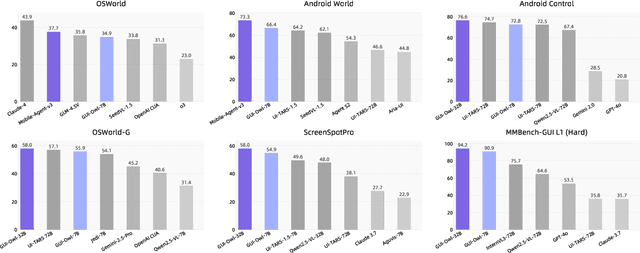
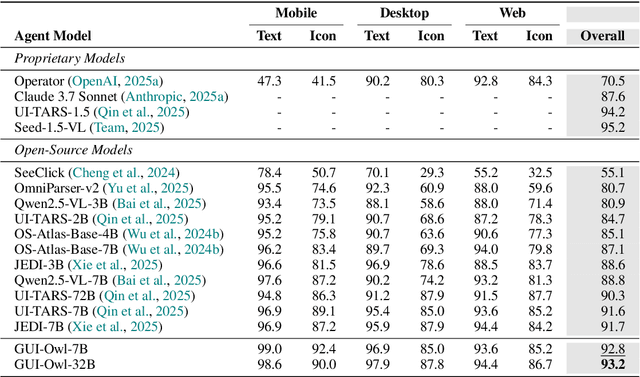
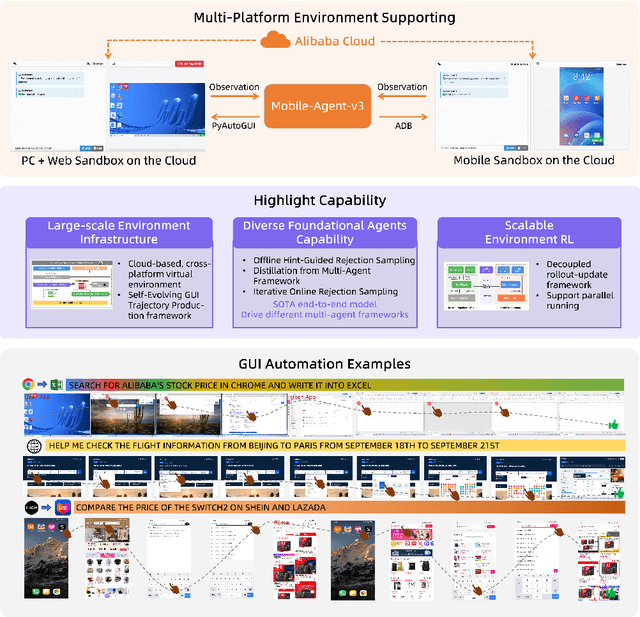
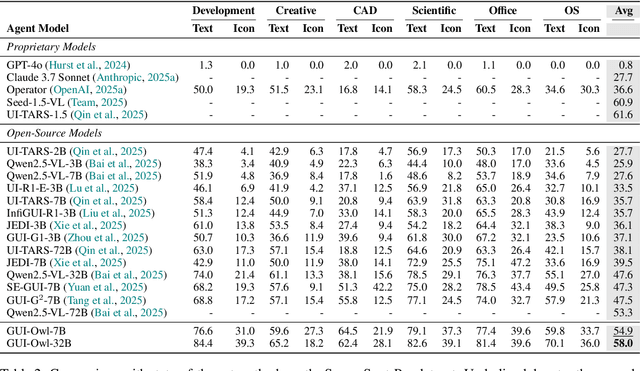
Abstract:This paper introduces GUI-Owl, a foundational GUI agent model that achieves state-of-the-art performance among open-source end-to-end models on ten GUI benchmarks across desktop and mobile environments, covering grounding, question answering, planning, decision-making, and procedural knowledge. GUI-Owl-7B achieves 66.4 on AndroidWorld and 29.4 on OSWorld. Building on this, we propose Mobile-Agent-v3, a general-purpose GUI agent framework that further improves performance to 73.3 on AndroidWorld and 37.7 on OSWorld, setting a new state-of-the-art for open-source GUI agent frameworks. GUI-Owl incorporates three key innovations: (1) Large-scale Environment Infrastructure: a cloud-based virtual environment spanning Android, Ubuntu, macOS, and Windows, enabling our Self-Evolving GUI Trajectory Production framework. This generates high-quality interaction data via automated query generation and correctness validation, leveraging GUI-Owl to refine trajectories iteratively, forming a self-improving loop. It supports diverse data pipelines and reduces manual annotation. (2) Diverse Foundational Agent Capabilities: by integrating UI grounding, planning, action semantics, and reasoning patterns, GUI-Owl supports end-to-end decision-making and can act as a modular component in multi-agent systems. (3) Scalable Environment RL: we develop a scalable reinforcement learning framework with fully asynchronous training for real-world alignment. We also introduce Trajectory-aware Relative Policy Optimization (TRPO) for online RL, achieving 34.9 on OSWorld. GUI-Owl and Mobile-Agent-v3 are open-sourced at https://github.com/X-PLUG/MobileAgent.
VLA-Mark: A cross modal watermark for large vision-language alignment model
Jul 18, 2025



Abstract:Vision-language models demand watermarking solutions that protect intellectual property without compromising multimodal coherence. Existing text watermarking methods disrupt visual-textual alignment through biased token selection and static strategies, leaving semantic-critical concepts vulnerable. We propose VLA-Mark, a vision-aligned framework that embeds detectable watermarks while preserving semantic fidelity through cross-modal coordination. Our approach integrates multiscale visual-textual alignment metrics, combining localized patch affinity, global semantic coherence, and contextual attention patterns, to guide watermark injection without model retraining. An entropy-sensitive mechanism dynamically balances watermark strength and semantic preservation, prioritizing visual grounding during low-uncertainty generation phases. Experiments show 7.4% lower PPL and 26.6% higher BLEU than conventional methods, with near-perfect detection (98.8% AUC). The framework demonstrates 96.1\% attack resilience against attacks such as paraphrasing and synonym substitution, while maintaining text-visual consistency, establishing new standards for quality-preserving multimodal watermarking
4KAgent: Agentic Any Image to 4K Super-Resolution
Jul 09, 2025Abstract:We present 4KAgent, a unified agentic super-resolution generalist system designed to universally upscale any image to 4K resolution (and even higher, if applied iteratively). Our system can transform images from extremely low resolutions with severe degradations, for example, highly distorted inputs at 256x256, into crystal-clear, photorealistic 4K outputs. 4KAgent comprises three core components: (1) Profiling, a module that customizes the 4KAgent pipeline based on bespoke use cases; (2) A Perception Agent, which leverages vision-language models alongside image quality assessment experts to analyze the input image and make a tailored restoration plan; and (3) A Restoration Agent, which executes the plan, following a recursive execution-reflection paradigm, guided by a quality-driven mixture-of-expert policy to select the optimal output for each step. Additionally, 4KAgent embeds a specialized face restoration pipeline, significantly enhancing facial details in portrait and selfie photos. We rigorously evaluate our 4KAgent across 11 distinct task categories encompassing a total of 26 diverse benchmarks, setting new state-of-the-art on a broad spectrum of imaging domains. Our evaluations cover natural images, portrait photos, AI-generated content, satellite imagery, fluorescence microscopy, and medical imaging like fundoscopy, ultrasound, and X-ray, demonstrating superior performance in terms of both perceptual (e.g., NIQE, MUSIQ) and fidelity (e.g., PSNR) metrics. By establishing a novel agentic paradigm for low-level vision tasks, we aim to catalyze broader interest and innovation within vision-centric autonomous agents across diverse research communities. We will release all the code, models, and results at: https://4kagent.github.io.
Node Splitting SVMs for Survival Trees Based on an L2-Regularized Dipole Splitting Criteria
Jun 13, 2025Abstract:This paper proposes a novel, node-splitting support vector machine (SVM) for creating survival trees. This approach is capable of non-linearly partitioning survival data which includes continuous, right-censored outcomes. Our method improves on an existing non-parametric method, which uses at most oblique splits to induce survival regression trees. In the prior work, these oblique splits were created via a non-SVM approach, by minimizing a piece-wise linear objective, called a dipole splitting criterion, constructed from pairs of covariates and their associated survival information. We extend this method by enabling splits from a general class of non-linear surfaces. We achieve this by ridge regularizing the dipole-splitting criterion to enable application of kernel methods in a manner analogous to classical SVMs. The ridge regularization provides robustness and can be tuned. Using various kernels, we induce both linear and non-linear survival trees to compare their sizes and predictive powers on real and simulated data sets. We compare traditional univariate log-rank splits, oblique splits using the original dipole-splitting criterion and a variety of non-linear splits enabled by our method. In these tests, trees created by non-linear splits, using polynomial and Gaussian kernels show similar predictive power while often being of smaller sizes compared to trees created by univariate and oblique splits. This approach provides a novel and flexible array of survival trees that can be applied to diverse survival data sets.
End-to-End HOI Reconstruction Transformer with Graph-based Encoding
Mar 08, 2025



Abstract:With the diversification of human-object interaction (HOI) applications and the success of capturing human meshes, HOI reconstruction has gained widespread attention. Existing mainstream HOI reconstruction methods often rely on explicitly modeling interactions between humans and objects. However, such a way leads to a natural conflict between 3D mesh reconstruction, which emphasizes global structure, and fine-grained contact reconstruction, which focuses on local details. To address the limitations of explicit modeling, we propose the End-to-End HOI Reconstruction Transformer with Graph-based Encoding (HOI-TG). It implicitly learns the interaction between humans and objects by leveraging self-attention mechanisms. Within the transformer architecture, we devise graph residual blocks to aggregate the topology among vertices of different spatial structures. This dual focus effectively balances global and local representations. Without bells and whistles, HOI-TG achieves state-of-the-art performance on BEHAVE and InterCap datasets. Particularly on the challenging InterCap dataset, our method improves the reconstruction results for human and object meshes by 8.9% and 8.6%, respectively.
An Atomic Skill Library Construction Method for Data-Efficient Embodied Manipulation
Jan 25, 2025



Abstract:Embodied manipulation is a fundamental ability in the realm of embodied artificial intelligence. Although current embodied manipulation models show certain generalizations in specific settings, they struggle in new environments and tasks due to the complexity and diversity of real-world scenarios. The traditional end-to-end data collection and training manner leads to significant data demands, which we call ``data explosion''. To address the issue, we introduce a three-wheeled data-driven method to build an atomic skill library. We divide tasks into subtasks using the Vision-Language Planning (VLP). Then, atomic skill definitions are formed by abstracting the subtasks. Finally, an atomic skill library is constructed via data collection and Vision-Language-Action (VLA) fine-tuning. As the atomic skill library expands dynamically with the three-wheel update strategy, the range of tasks it can cover grows naturally. In this way, our method shifts focus from end-to-end tasks to atomic skills, significantly reducing data costs while maintaining high performance and enabling efficient adaptation to new tasks. Extensive experiments in real-world settings demonstrate the effectiveness and efficiency of our approach.
ST-ReP: Learning Predictive Representations Efficiently for Spatial-Temporal Forecasting
Dec 19, 2024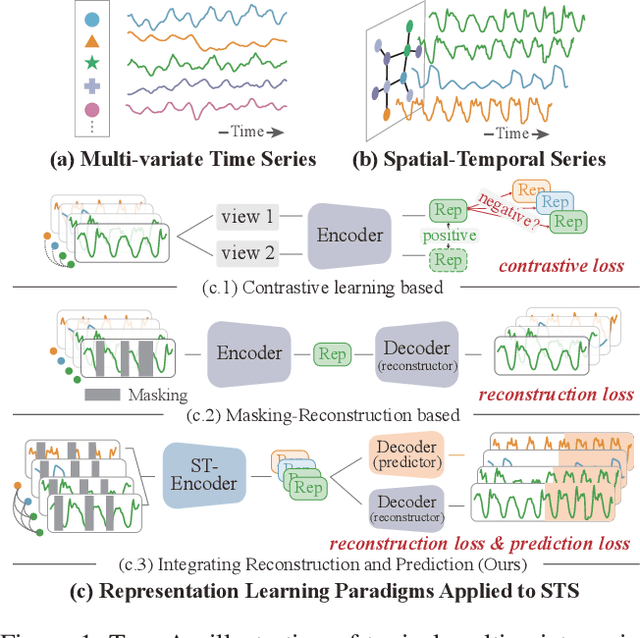
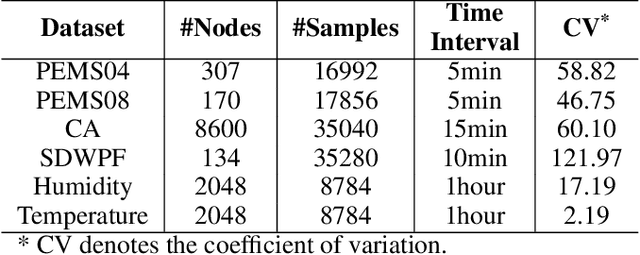
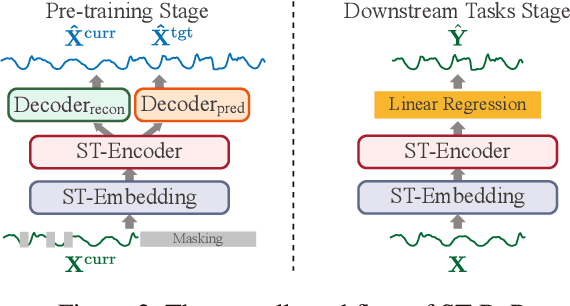
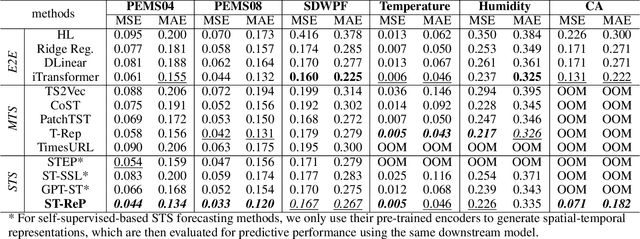
Abstract:Spatial-temporal forecasting is crucial and widely applicable in various domains such as traffic, energy, and climate. Benefiting from the abundance of unlabeled spatial-temporal data, self-supervised methods are increasingly adapted to learn spatial-temporal representations. However, it encounters three key challenges: 1) the difficulty in selecting reliable negative pairs due to the homogeneity of variables, hindering contrastive learning methods; 2) overlooking spatial correlations across variables over time; 3) limitations of efficiency and scalability in existing self-supervised learning methods. To tackle these, we propose a lightweight representation-learning model ST-ReP, integrating current value reconstruction and future value prediction into the pre-training framework for spatial-temporal forecasting. And we design a new spatial-temporal encoder to model fine-grained relationships. Moreover, multi-time scale analysis is incorporated into the self-supervised loss to enhance predictive capability. Experimental results across diverse domains demonstrate that the proposed model surpasses pre-training-based baselines, showcasing its ability to learn compact and semantically enriched representations while exhibiting superior scalability.
Unicorn: Unified Neural Image Compression with One Number Reconstruction
Dec 11, 2024Abstract:Prevalent lossy image compression schemes can be divided into: 1) explicit image compression (EIC), including traditional standards and neural end-to-end algorithms; 2) implicit image compression (IIC) based on implicit neural representations (INR). The former is encountering impasses of either leveling off bitrate reduction at a cost of tremendous complexity while the latter suffers from excessive smoothing quality as well as lengthy decoder models. In this paper, we propose an innovative paradigm, which we dub \textbf{Unicorn} (\textbf{U}nified \textbf{N}eural \textbf{I}mage \textbf{C}ompression with \textbf{O}ne \textbf{N}number \textbf{R}econstruction). By conceptualizing the images as index-image pairs and learning the inherent distribution of pairs in a subtle neural network model, Unicorn can reconstruct a visually pleasing image from a randomly generated noise with only one index number. The neural model serves as the unified decoder of images while the noises and indexes corresponds to explicit representations. As a proof of concept, we propose an effective and efficient prototype of Unicorn based on latent diffusion models with tailored model designs. Quantitive and qualitative experimental results demonstrate that our prototype achieves significant bitrates reduction compared with EIC and IIC algorithms. More impressively, benefitting from the unified decoder, our compression ratio escalates as the quantity of images increases. We envision that more advanced model designs will endow Unicorn with greater potential in image compression. We will release our codes in \url{https://github.com/uniqzheng/Unicorn-Laduree}.
Video Quality Assessment: A Comprehensive Survey
Dec 04, 2024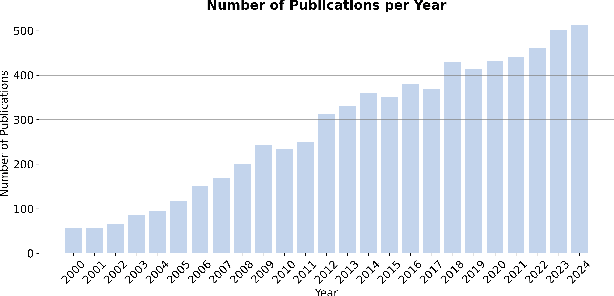
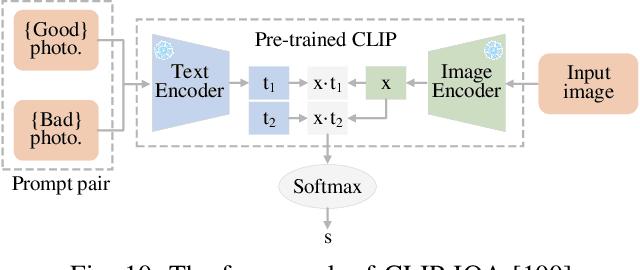
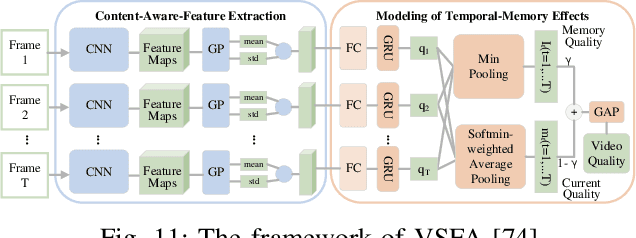
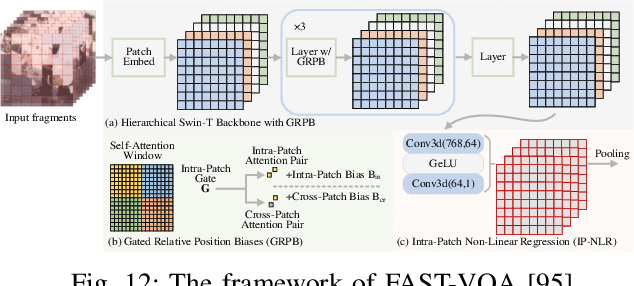
Abstract:Video quality assessment (VQA) is an important processing task, aiming at predicting the quality of videos in a manner highly consistent with human judgments of perceived quality. Traditional VQA models based on natural image and/or video statistics, which are inspired both by models of projected images of the real world and by dual models of the human visual system, deliver only limited prediction performances on real-world user-generated content (UGC), as exemplified in recent large-scale VQA databases containing large numbers of diverse video contents crawled from the web. Fortunately, recent advances in deep neural networks and Large Multimodality Models (LMMs) have enabled significant progress in solving this problem, yielding better results than prior handcrafted models. Numerous deep learning-based VQA models have been developed, with progress in this direction driven by the creation of content-diverse, large-scale human-labeled databases that supply ground truth psychometric video quality data. Here, we present a comprehensive survey of recent progress in the development of VQA algorithms and the benchmarking studies and databases that make them possible. We also analyze open research directions on study design and VQA algorithm architectures.
 Add to Chrome
Add to Chrome Add to Firefox
Add to Firefox Add to Edge
Add to Edge